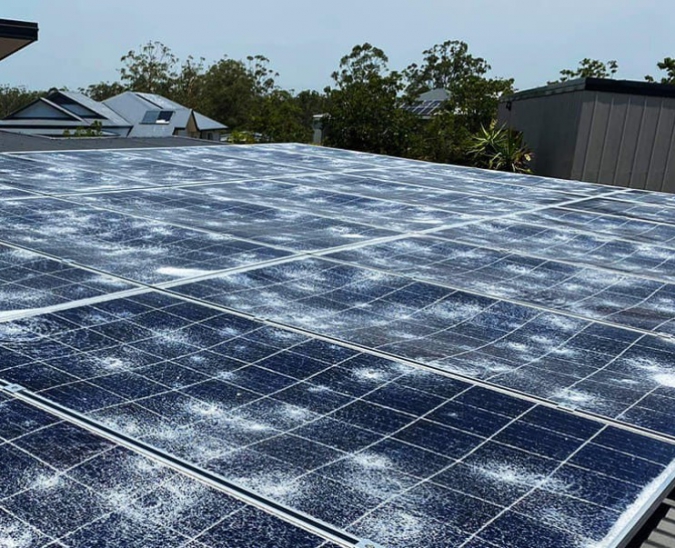
The increasing frequency of extreme weather events, such as hailstorms, also in our country, poses a growing risk to solar systems. Although they are resilient to a certain extent and are guaranteed, other risk management solutions are increasingly needed.
Climate models are predicting an increase in the frequency and intensity of heavy thunderstorms with strong winds and hail, which will continue to occur across the country this summer. Forecasts are still far from accurately predicting long-term storm activity in our region. It is not yet clear whether global warming, although it appears to be the case, will lead to more and more ice falling during hailstorms. In any case, the risk of hailstorms is an increasingly important issue for solar power plants.
As hail damage claims from owners and insurers increase, which is expected to continue due to the proliferation of solar power plants alone, a proactive approach to hailstorms is increasingly recommended for solar farms and household-scale solar systems (HMCS).
Solar panels must also pass hail tests
Quality solar panels are usually tested and manufactured to withstand normal hailstorms. Most manufacturers subject the modules to a targeted hail test, during which ice chips, tennis balls or iron balls are dropped/shot onto the modules at speeds of up to 80 kilometres per hour. The hail resistance of the solar panels is mainly influenced by the thickness of the outer glass envelope, which may vary from model to model. Panels with a thicker glass coating are obviously less vulnerable to severe damage, which also reduces energy production.
Solar panels with tempered glass from the more reputable manufacturers can withstand rain with larger pieces of ice, but ice with a diameter of more than 3 cm and falling at higher speeds can damage even better quality systems, and there are examples of rainstorms with much larger ice particles. Hailstorms can cause damage of varying severity to solar cells, but internal components of the module, solar cells, and other components can also be damaged even if external cracks are minimal or non-existent.
Damage to solar panels caused by hail is not only a safety, durability and aesthetic problem, but can also reduce the performance of solar panels. Solar panels can still function despite cracks in their surface caused by hail, but their ability to produce energy is reduced in proportion to the extent of the damage. In more severe cases, entire solar farms can be rendered inoperable.
New developments stimulated by the increase in risk
Reducing potential damage often requires extra investment, but this is likely to become increasingly worthwhile as risk increases.
Firstly, it is worth installing the best quality solar panels available, as this in itself reduces the risk of ice damage. However, despite panel tests in this respect, most solar panels are not covered by warranties against hail damage. And those warranties that do address hail within the category of environmental factors only cover certain specific conditions or events.
Improving the forecasting of hailstorms is a prerequisite for damage prevention, which has already prompted meteorological software providers to make new developments. This gives the owners and operators of large solar parks in particular the time and leeway to take safety measures.
The protection of solar farms against extreme hailstorms can also be enhanced by increasing the tilt angle of the solar panels, as most of the heavy, large hail that causes most damage tends to fall at near-perpendicular angles to the ground. However, this solution has limited (or no) applicability for some systems, such as rooftops and other fixed-mounted solar power plants, and reduces the efficiency of energy production and the utilization of the panels. However, following the same principle, the increased threat of hailstorms is also a major concern.
It pays to take out solar insurance
However, solar insurance is also the main risk management solution for property owners with a household solar system.
It is possible and worthwhile to ensure the solar system is being built already at the construction stage with the appropriate construction and installation insurance. The property owner should also check his existing home insurance contract, as there are home insurance policies available that can be extended to cover properties under construction, extension, or even renovation, for the period and up to the limit specified in the contract. When installing a solar system financed by a loan or public subsidy, the financier may also require the solar system to be insured.
